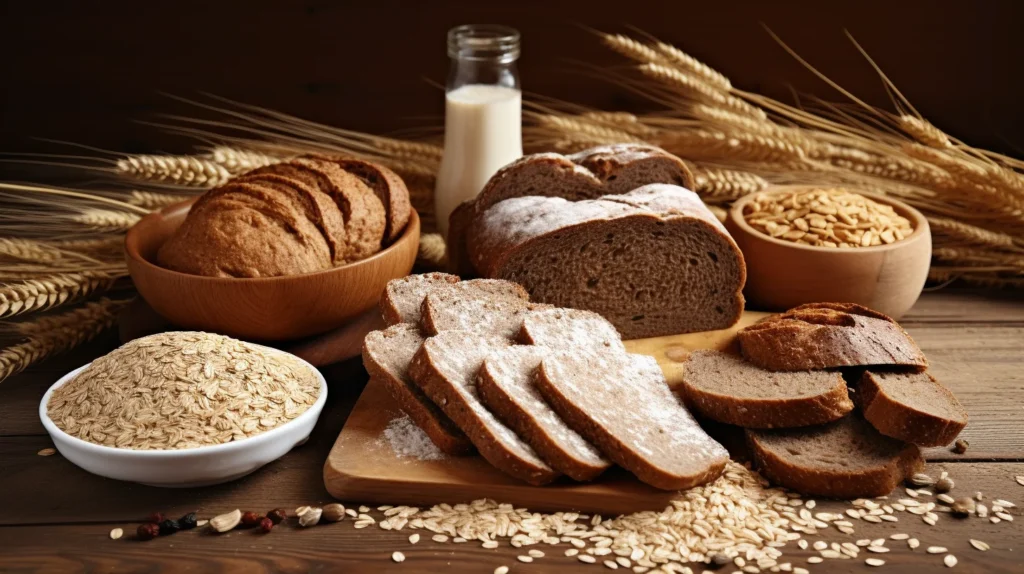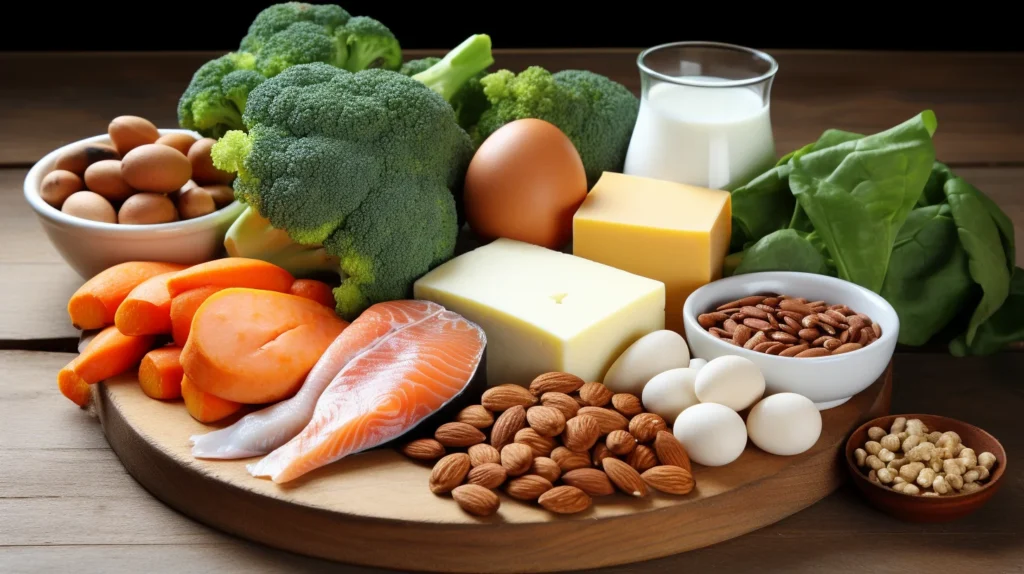When it comes to nurturing your body during pregnancy, understanding the ins and outs of a pregnancy diet chart is key. This chart is not only about ensuring you eat healthily, but it also guides you on how to follow a balanced diet tailored to your body’s increased nutritional needs. As a pregnant woman, you’re not only eating for your well-being but also for the growth and development of your little one. Hence, every food choice you make will play a pivotal role in your pregnancy journey.

In essence, a pregnancy diet chart is your road map, directing you on the food path toward a healthy pregnancy. It incorporates the essential nutrients that a woman must consume daily to ensure that both mother and baby are well-nourished.
Importance of a Balanced Diet During Pregnancy
Maintaining a balanced diet during pregnancy is critical not just for the mother’s health but also for the baby’s development. Consuming a variety of foods from each food group helps ensure that you and your baby receive a range of nutrients necessary for your health.
A balanced diet during pregnancy supports the growth and development of your baby while also keeping you strong and prepared for the changes your body undergoes. It’s essential to understand that no two pregnancies are the same, hence the need for a personalized diet chart that suits your body’s unique needs throughout your pregnancy.
Pregnancy Diet and Weight Management
Weight management is another critical aspect of a balanced pregnancy diet. A steady weight gain throughout pregnancy is natural and even necessary, but an unhealthy weight gain could lead to pregnancy complications such as gestational diabetes or pre-eclampsia.
The key is to ensure that the weight gain is gradual and consistent, largely based on the baby’s growth. This can be achieved by adhering to a diet that balances intake and output, thereby ensuring your body gets what it needs without excess.
What to Include in Your Pregnancy Diet Chart

Your pregnancy diet chart should be packed with nutrient-rich foods that promote your baby’s growth and development while maintaining your health. Let’s delve into what your diet during pregnancy should look like:
Whole Grains
Whole grains are an excellent source of energy in your diet and are packed with fiber, iron, and B vitamins. Whole grains such as brown rice, oatmeal, and whole-grain bread should form an integral part of your daily diet. These food sources are not only energy-dense but also help in the regular functioning of the body.
Fresh Fruits and Leafy Vegetables
Fresh fruits and vegetables are packed with essential nutrients such as vitamin C and folic acid. Folic acid, found in leafy vegetables like spinach, is especially crucial in the first trimester as it helps prevent structural defects in the baby.
Moreover, fruits like oranges and grapefruits that are rich in Vitamin C, help in the absorption of iron, contributing to the mother’s and baby’s overall health.
Protein Sources
Lean meat, poultry, fish, eggs, and plant-based proteins like lentils and chickpeas, are great sources of protein, vital for the growth of the fetal tissue, including the brain. It also helps with breast and uterine tissue growth during pregnancy.
However, certain types of fish and raw or undercooked eggs, meat, and poultry should be avoided as they can cause food poisoning.
Dairy Products
Dairy products like milk, cheese, and yogurt are important because they provide the calcium and fortified vitamin D your body needs to ensure that the baby’s bones and teeth develop properly.
Healthy Fats
Healthy fats such as Omega-3 fatty acids are beneficial during pregnancy as they contribute to brain development and eye health in the fetus. Foods rich in Omega-3 include fish, nuts, and seeds.
Foods to Avoid During Pregnancy

While pregnancy is a time of eating well and maintaining a balanced diet, it is also important to know what foods to avoid during pregnancy. Consuming certain foods may pose risks, including food poisoning or harm to your baby.
Raw or Undercooked Foods
Eating raw or undercooked meats, fish, or eggs can expose you to a range of bacteria and parasites that can be harmful to you and your baby. Always make sure your food is well-cooked.
Certain Types of Fish
Avoid high-mercury fish, like swordfish, king mackerel, shark, and tilefish. High levels of mercury consumed during pregnancy can damage a baby’s developing brain and nervous system.
Unpasteurized Foods
Unpasteurized milk, cheese, and fruit juices can contain an array of harmful bacteria, including Listeria, Salmonella, E. coli, and Campylobacter, which can lead to potentially life-threatening infections in pregnant women.
Excess Caffeine and Alcohol
Caffeine should be limited to less than 200 milligrams per day during pregnancy. High intake during pregnancy can lead to premature birth or low birth weight. Alcohol should be completely avoided as it can lead to several pregnancy complications and severe problems in the baby’s development.
The Essential Nutrients in a Healthy Pregnancy Diet

During pregnancy, certain nutrients become vital for the growth and development of your baby. Let’s delve into the essential nutrients you need to include in your pregnancy diet chart.
Folic Acid
Folic acid, a B vitamin, helps prevent structural defects in the baby. It’s crucial, especially in the first trimester. The best sources of folic acid include leafy vegetables, oranges, and fortified cereals.
Iron
Iron supports your baby’s growth and development. Iron also helps prevent anemia, a condition in which blood lacks adequate healthy red blood cells. Iron-rich foods include lean meat, poultry, fish, and iron-fortified foods.
Calcium
Calcium is essential for the healthy bones of your baby. Dairy products are the best source of calcium. Other options include broccoli, oranges, almonds, and grains.
Protein
Protein promotes the growth of fetal tissue, including the brain. It also helps with breast and uterine tissue growth during pregnancy. Protein-rich foods include lean meat, poultry, fish, cheese, lentils, and beans.
Omega-3 fatty acids
Omega-3 fatty acids are crucial for your baby’s brain and eye development. Good sources include fish, walnuts, and chia seeds.
Nutritional Needs for Each Trimester

A pregnancy diet must be adjusted to cater to the evolving needs of both mother and baby during different trimesters. Here, we break down the critical nutritional requirements during each stage of pregnancy.
First Trimester: Building a Strong Foundation
The first trimester is crucial as it sets the stage for the baby’s development. The focus should be on foods rich in folic acid and vitamin C. Consuming fortified cereals, leafy greens, citrus fruits, and lentils can help prevent structural defects in the baby.
A traditional Indian diet is well-equipped to meet these needs. Think about adding spinach (rich in folic acid), oranges (packed with vitamin C), and lentils (a powerhouse of nutrients) to your diet.
Second Trimester: Supporting Rapid Growth
The second trimester witnesses the rapid growth of the baby. The diet must incorporate increased calories from complex carbohydrates, proteins, and healthy fats. Consume more whole grains, lean proteins, and nuts.
During this phase, an Indian pregnancy diet should include foods like whole grain roti, dals, lean meats like chicken or fish, and a variety of fruits and vegetables. Remember, it’s not about eating for two but eating right.
Third Trimester: Preparing for Birth
The third trimester requires the mother to prepare for birth and lactation. The diet must be rich in iron and calcium. It is also the time to boost omega-3 fatty acid intake to aid the baby’s brain development.
Include iron-rich foods like spinach, pomegranate, and beetroot. Dairy products, ragi, and sesame seeds can provide the necessary calcium. For omega-3 fatty acids, include foods like walnuts, flax seeds, and chia seeds in your daily diet.
A well-balanced Indian diet during pregnancy is vital in supporting a healthy lifestyle, and in turn, a healthy baby.
A Sample Pregnancy Diet Chart for an Indian Woman

A pregnancy diet chart can help you ensure that you’re getting all the nutrients you and your baby need. Here’s an example of a daily diet chart for an Indian pregnant woman.
Breakfast:
- Whole wheat toast with a spread of peanut butter
- A bowl of fresh fruit, such as bananas, apples, or oranges
- A glass of freshly squeezed orange juice
Mid-Morning Snack:
- A handful of dry fruits and nuts, such as almonds and walnuts
- A cup of low-fat yogurt
Lunch:
- A serving of lean meat like chicken or fish, or a plant-based protein source like lentils or chickpeas
- A side of leafy green vegetables, such as spinach
- Brown rice or whole grain roti
Afternoon Snack:
- A bowl of cut fresh fruits, mixed with a dollop of yogurt and sprinkling of granola
- A glass of buttermilk or lassi
Dinner:
- Grilled fish or tofu or paneer with a side of mixed vegetables
- A serving of quinoa or brown rice
- A bowl of salad with a dressing of olive oil
Bed-Time Snack:
- A glass of warm milk with a pinch of turmeric
- A handful of pumpkin or sunflower seeds
Remember, this is just a sample diet chart. Your actual diet might vary based on your dietary preferences, nutritional needs, and medical conditions. Always consult your doctor or a dietitian to create a pregnancy diet chart that’s tailored to your needs.
KEY TAKEAWAYS
1. A balanced diet during pregnancy is critical to the health of both the mother and baby, necessitating personalized diet plans to suit unique needs.
2. Weight management plays a significant role during pregnancy, making gradual and consistent weight gain essential to prevent complications like gestational diabetes.
3. A pregnancy diet should be nutrient-rich and varied, with the inclusion of whole grains, fresh fruits, vegetables, lean proteins, and healthy fats. Avoiding high-risk foods such as raw or undercooked meats and high-mercury fish is essential.
4. The nutrient needs during pregnancy change with each trimester. The first trimester emphasizes folic acid, the second trimester requires increased calories, and the third trimester focuses on iron, calcium, and Omega-3 fatty acids.
Final Thoughts
When you’re pregnant, maintaining a healthy diet becomes even more critical. It’s not just about you now – another life’s depending on you for nourishment and growth. The Indian pregnancy diet chart provided in this article can serve as a starting point to help you understand what kind of foods you should be including in your diet during pregnancy.
However, everyone’s nutritional needs are unique, and what works for one might not work for another. Always consult your doctor or a dietitian for personalized advice. Remember, your goal is to provide a conducive environment for your baby’s growth and development while also taking care of your own health.
If you found this article helpful, please share it with your friends on WhatsApp, Facebook, or Twitter using the buttons above or below the article.
Frequently Asked Questions (FAQs)
What type of diet should a pregnant woman follow?
A pregnant woman should follow a balanced and healthy diet that includes a variety of food groups. This ensures she receives all essential nutrients for the baby’s growth and development.
How does the diet during pregnancy vary as per the trimesters
The nutritional needs of a pregnant woman change with each trimester. For example, during the first trimester, folic acid is crucial to help prevent structural defects in the baby. In the second and third trimesters, increased intake of lean meat and other proteins can aid the baby’s growth.
Is it safe to eat raw or undercooked food during pregnancy?
Eating raw or undercooked food during pregnancy can be harmful. It’s best to avoid such foods and ensure everything is well-cooked.
Are dry fruits a good addition to a pregnant woman’s diet?
Yes, dry fruits are a great source of essential nutrients and can be included in a pregnancy diet plan. However, they should be consumed in moderation due to their high-calorie content.
What role do vitamins and minerals play in pregnancy?
Vitamins and minerals play a crucial role in ensuring the healthy growth and development of the baby. For instance, folic acid helps prevent birth defects, and calcium promotes the development of healthy bones.
What are the benefits of following a healthy Indian diet during pregnancy?
An Indian pregnancy diet is nutrient-rich, balanced, and promotes a healthy lifestyle, supporting the mother’s and baby’s health with fiber-rich foods, antioxidants, and essential plant compounds.
What changes should I make to my diet in the second trimester of pregnancy?
The second trimester demands a calorie increase. Include lean proteins, whole grains, fresh produce, healthy fats, and stay hydrated for the baby’s rapid growth.
How often should I change my diet during pregnancy?
Aim for a balanced diet throughout pregnancy, slightly adjusting as per nutritional needs during each trimester.
Why is it important to include carbohydrates in a pregnancy diet?
Carbohydrates provide energy for your body and are crucial for the baby’s brain development. Choose complex carbohydrates like whole grains for sustained energy.
Can you give some healthy eating tips for a pregnant woman following an Indian diet?
Include diverse food groups, whole grains, pulses, dairy, fruits, and vegetables. Add lean proteins and limit spicy or fried foods. Home-cooked meals are best for hygiene and nutrition.





